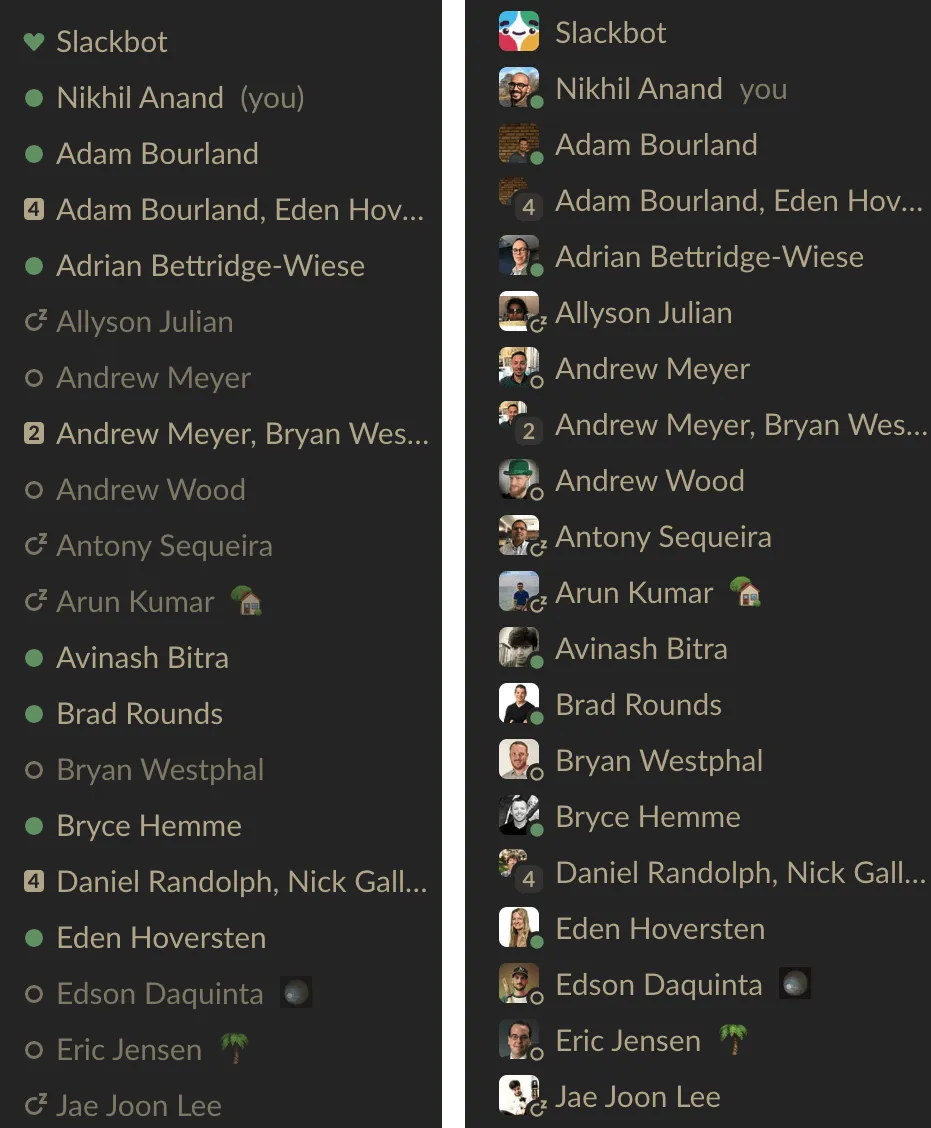Goodbye Glaciers
Pictures taken 100 years apart. The image at the bottom is 18 years old.

I’m sure we can solve this with privatization, deregulation, lowering taxes on the rich, and letting an unfettered Free Market “figure it out” ♥️
Pictures taken 100 years apart. The image at the bottom is 18 years old.

I’m sure we can solve this with privatization, deregulation, lowering taxes on the rich, and letting an unfettered Free Market “figure it out” ♥️
This is what it takes to read a bloody article with a PiHole to block ads. I don’t even want to get started on the AMP nonsense. First, a focus-stealing popup asking if you’d like to subscribe to some bullshit.

.
.
.
followed by another popup asking you’d subscribe to more bullshit.

.
.
.
after which you can finally see what you came for… which helpfully occupies the bottom 20% of the viewport 💯

See also: Every Website in 2020. Nothing will change.
It was the pivotal teaching of Pluthero Quexos, the most celebrated dramatist of the Second Dominion, that in any fiction, no matter how ambitious its scope or profound its theme, there was only ever room for three players. Between warring kings, a peacemaker; between adoring spouses, a seducer or a child. Between twins, the spirit of the womb. Between lovers, Death. Greater numbers might drift through the drama, of course—thousands in fact—but they could only ever be phantoms, agents, or, on rare occasions, reflections of the three real and self-willed beings who stood at the center. And even this essential trio would not remain intact; or so he taught. It would steadily diminish as the story unfolded, three becoming two, two becoming one, until the stage was left deserted.

The function of the imagination is not to make strange things settled, so much as to make settled things strange.
They use a pantograph to etch things out, after which they ‘tampograph’ the logo (at 1:45.)
When you’re following a bunch of feeds, it’s easy to forget that the web is the greatest library in the history of the world—and that a good library doesn’t just have a rack of newspapers, it has a vast collection of books and archives: the stacks.
These are stories that get reposted a lot. Many of them truly are classics.
Security by Obscurity is when you hide how a security measure works, not when you keep some part of it a secret.
As a former sysadmin (but no expert on security): This should be read and re-read. After which one should take a few days and read it again before saying anything on the subject.
Sánchez infuses his landscape scenes with what the Cuban art critic, Geraldo Mosquera, called “an almost metaphys- ical vision.” This is not surprising considering that Sánchez is ardently devoted to yoga and to meditation which he practices several hours daily. He also goes regularly to a Siddha Yoga retreat in upstate New York. One French critic wrote at the time of the artist’s show in Paris that Sánchez’ work is “a mixture of extreme precision and meditation, of yearning and radiance.”



Here he is on Instagram.
Bas Uterwijk’s AI portraits1 look just like photo shots, but are largely generated by an algorithm. He uploads drawings and paintings, often images of people who lived before the invention of photography. With the help of a neural network he creates realistic interpretations that appear as if they were made in a photographic process.
Each work is a quest for the visual character of the person portrayed. By combining art-historical and archaeological elements, Uterwijk achieves a layered and fascinating result.
First came by this remarkable generation of the DOOM guy’s face:

And here are Alexander, Caesar, Zuck, and Jesus.




More of his work on Instagram.
Looks like he uses ArtBreeder with StyleGAN2.↩︎
I cannot imagine the decades of engineering that went into realizing this. “Spot” the Robot Dog doing her ballet was 💯 Bravo, Boston Dynamics for taking us that much closer to (what, for now, looks like a fun) Singularity.
Dear web developers, The answer is zero. Zero. Get it through your thick skulls. Zero is the number of times anyone has EVER wanted something to autoplay on your site and start making noise. I’d honestly rather you mine crypto-currency in my browser than use my speakers. #kthxbye
Bit pricey but appears to generate lovely layouts. Via Ash Furrow’s photography site.

Serigraph for sale at the Davidson Galleries (it’s $550.)
Corpsing is British theatrical slang for unintentionally laughing during a non-humorous performance or when a role in a humorous performance is intended to be played “straight”. In North American TV and film, this is considered a variation of breaking character or simply “breaking”.
Here’s some further examination by Ricky Gervais and crew. Features Sir Ian McKellen and Daniel Radcliffe.

Here’s some more of his art and his Facebook page. Not sure if these are licensed, but you can buy some prints off Indian Amazon.
“Our hip product designers all agree: Adding significant noise via tiny profile pictures allows our users to tell, at a glance, who is online and who isn’t.”
“And no, you cannot opt out. Because fuck you. What’re your options? MatterMost? 🖕😂🖕”

Learn C and build a basic Lisp #VALUE 😍
If you rarely drive on snow, just pretend you’re taking your grandma to church. There’s a platter of biscuits and 2 gallons of sweet tea in glass jars in the back seat. She’s wearing a new dress and holding a crock pot full of gravy.
“Am I truly controlling anything?” (cached)

Awesome.
… How fun is it to dick around in the Star Wars universe without some sad kid and their daddy issues killing the vibe man?
Of course. Well, the transaction was in person and in cash (of course.)
It was just a little bag of weed sold through an Arpanet account in Stanford’s artificial intelligence lab in 1972. It’s not clear who was in on the sale aside from the students, but despite the underhanded nature of the deal, anyone with knowledge of the sale who wasn’t a square must have been excited about the implications of this early use of the Internet.
As the article clarifies:
The first online sale that we’d recognize as such today, complete with credit card information and the United States Postal Service, wasn’t until 1994. On August 11 that year, Dan Kohn sold a copy of the Sting album Ten Summoner’s Tales to a man in Philadelphia for $12.48 plus shipping, paid via encrypted credit card. Kohn later bragged, “Even if the N.S.A. was listening in, they couldn’t get his credit card number.”
(cached)


Watched with CK. The plot doesn’t make any sense whatsoever. But very, very entertaining. Anyone who claims to understand what’s going on after the first 32 viewings is a damned liar. A perfect one-line review:
So suit up […] for what may not be Nolan at his best, but is definitely Nolan at his most.
Excellent soundtrack by Ludwig Göransson (first came by his work when watching The Mandalorian and just knew he was something special.)
Also the Sator Square for a standard dose of Nolan apophenia1. See also: The pitch meeting.
It has no goddamn ‘meaning’ other than being a middle-school palindromic curiosity (and contributes nothing other than names to the plot.)↩︎
Using a Bloopy Thing to print on all sorts of materials is called “Pad Printing” or tampography. Here’s a Big Bloopy Thing printing a very beautiful pattern onto a bowl (and here’s two of them going at the same time.)
You can use the same technique on all sorts of things: plastic bins, pens, keychains, golf balls, pills. The silicone/bloop conforms to the shape of the object to print on rather easily.
Quality Logo Products has a quick explanation:

Entertaining. Thought the alternate ending would’ve been more likely (the highly-trained armchair psychoanalyst that I am 😆)
I wish they would blare portions of Tom Cruise’s COVID meltdown at all grocery stores in my lovely state. Someone on /r/desmoines posted an anti-masker patriot at our Costco who could use this message.
I’m on the phone with every f–king studio at night, insurance companies, producers, and they’re looking at us and using us to make their movies. We are creating thousands of jobs you motherf–kers.
I don’t ever want to see it again, ever! And if you don’t do it you’re fired, if I see you do it again you’re f–king gone. And if anyone in this crew does it – that’s it, and you too and you too. And you, don’t you ever f–king do it again.
That’s it! No apologies. You can tell it to the people that are losing their f-ing homes because our industry is shut down. It’s not going to put food on their table or pay for their college education.
That’s what I sleep with every night. The future of this f–king industry! So I’m sorry I am beyond your apologies. I have told you and now I want it and if you don’t do it you’re out. We are not shutting this f–king movie down! Is it understood?
If I see it again you’re f–king gone — and you are — so you’re going to cost him his job, if I see it on the set you’re gone and you’re gone.
That’s it. Am I clear?
Do you understand what I want? Do you understand the responsibility that you have? Because I will deal with your reason. And if you can’t be reasonable and I can’t deal with your logic, you’re fired. That’s it. That is it.
I trust you guys to be here. That’s it. That’s it guys. Have a little think about it. . . [inaudible].
That’s what I think of Universal and Paramount. Warner Brothers. Movies are going because of us. If we shut down it’s going to cost people f–king jobs, their home, their family. That’s what’s happening.
All the way down the line. And I care about you guys, but if you’re not going to help me you’re gone. OK? Do you see that stick? How many meters is that?
When people are standing around a f–king computer and hanging out around here, what are you doing? And if they don’t comply then send their names to Matt Spooner. That’s it.
I must have watched this 14,221 times. A parody of this (real) miniseries. There’s a Part III too.
Via PLG.
Had to cache it because this is just lovely stuff. Pretty sure I had a mini-blackout when I read the Trainspotting part 💯
It’s a well-known fact that computers run faster in the evening.

♥️🐙♥️

Watched because Denzel and Revenge. Not sure why I bothered finishing it. Absolutely awful. The cinematographer appears to have borrowed the ghastly verdigris-like palette from this terribly photoshopped poster, and keeps twitching the camera with the giddiness of a raver who’s taken two of them Mitsubishi pills that were in vogue at the time.
Dakota Fanning is the only other reason to endure this. She was only ten in 2004 but acted like she’d been at it for at least three decades.
Bilal Göregen (YouTube, Instagram) is the Turkish street musician in my favorite video of 2020.
He sounds like a very positive, gracious, and sweet human being on this KnowYourMeme interview1 which features this delightful nugget (emphasis mine):
Q: How has the response been from your previous fans and followers that were around before the meme? Also, have you received any interesting or wholesome messages from fans since your meme went viral that you can share with us?
A: When I read the comments section after my video went viral, I see that my Turkish followers still do not understand the meme, and they ask questions like, “Is the channel stolen? Why are there so many foreigners here? Where are the Turks?”
Assorted Bilal things: Here’s a ten-hour version of his viral hit. And here’s him making a lot of Indian people very happy. And lest I forget, this is the original Finnish folk song he’s covering:
Which TIL has an editorials section…↩︎

Watched with LD. Reminded me of “Hereditary” (it’s a slow burn) but with The Evil being this chimera of financial insolvency, really bad trust issues, childhood trauma, and severe affluenza. Jude Law was perfect, but Carrie Coon was so fucking good as the beleagured yet passively complicit partner and mostly grieving person. The scene shot from the stable facing the manor was genius. Sean Durkin (writer and director) stuck the landing perfectly. Lovely stuff.

Tedious, uneven, rushed, and a colossal waste of an interesting premise and the talents of several amazing actors (Ron Perlman, Dana Delany, Andre Royo, Alona Tal, and a brilliant Garret Dillahunt.) You can skip the latter half of the episodes in the first season (here’s a recap) and skip-watch all but the last three episdoes of the second, and still know what’s going on. It’s as if they were told there wasn’t going to be a third
If impatient, skip to the last minute.
This is Dogor 🐾, an 18,000-year old puppy preserved in Siberian permafrost. His name means “friend.” He was discovered as a lump of frozen mud near Yakutsk and lies at a private museum.
Dogor left the wilderness as a lump of soil and ice, but scientists could make out the head and paws of what they believed at first to be a young wolf.
Fyodorov told The Washington Post that he carefully cleaned off dirt and debris to reveal near-intact fur — “extremely rare for animals of that time period.”
“It’s an amazing feeling, to see, touch and feel the history of earth,” he said.

Other researchers, affiliated with the Centre for Paleogenetics in Stockholm (Twitter), think he could be “part of the evolutionary bridge that turned a fierce wild animal into man’s best friend.”
Testing on a rib bone has revealed the animal’s age: about two months, said Stanton, a postdoctoral scholar who has been working for more than a year on a broader attempt to answer lingering questions about canine history.
The analysis also put Dogor’s short life at a particularly interesting period of time, right around when many wolf lineages were going extinct and dogs are thought to have emerged. Exactly how and when they evolved from wolves is unclear; one recent study estimates between 20,000 to 40,000 years ago.


These are memo pads that “excavate objects” as they are used. A bit more expensive than your average PostIt, but a very lovely idea.


One should be good 80%+ of time between that and the awesome pgcli.
Tapped this YouTube suggestion on a lazy Sunday. This man pushed my capacities for sympathy and empathy to their breaking points in this 20-minute highlight reel. I don’t know what to type here other than quote the very first sentence of his Fandom wiki page:
Raj is widely regarded as one of the worst and most useless chefs in Hell’s Kitchen history.
I don’t watch the show and don’t have a full context. But the most charitable assessment I can offer after sitting through the highlight reel below is this: The man is wired very, very differently, which I suppose makes for engaging (cruel?) television 🤷♂️
Turns out Miyazaki’s dad was an aeronautical engineer.
You could almost just narrate the body changes and narrate the dream. So here she’s asleep. She sees a crab and her color starts to change a little bit then she turns all dark. Octopuses will do that when they leave the bottom. This is a camouflage like she’s just subdued a crab and now she’s going to sit there and eat it and she doesn’t want anyone to notice her. It’s a very unusual behavior to see the color come and go on her mantle like that. I mean, just to be able to see all the different color patterns just flashing one after another… you don’t usually see that when an animal’s sleeping which really is fascinating.
But yeah if she’s dreaming that’s the dream.